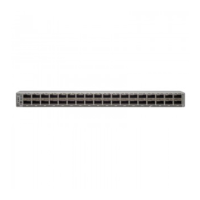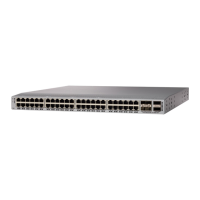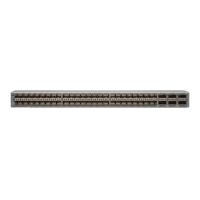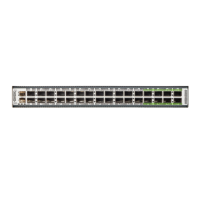•
Serial number of the module
•
Stack trace for crashes
•
CPU hog information
•
Memory leak information
•
Software error messages
•
Hardware exception logs
•
Environmental history
•
OBFL specific history information
•
ASIC interrupt and error statistics history
•
ASIC register dumps
For more information about configuring OBFL, see the Cisco Nexus 9000 Series NX-OS System Management
Configuration Guide.
Using Diagnostics
Generic online diagnostics (GOLD) define a common framework for diagnostic operations across Cisco
platforms. The GOLD implementation checks the health of hardware components and verifies proper operation
of the system data and control planes. Some tests take effect when the system is booting up; other tests take
effect when the system is operational. A booting module goes through a series of checks before coming online
to allow the system to detect faults in the hardware components at bootup and to ensure that a failing module
is not introduced in a live network.
Defects are also diagnosed during system operation or runtime. You can configure a series of diagnostic
checks to determine the condition of an online system. You must distinguish between disruptive and
nondisruptive diagnostic tests. Although nondisruptive tests occur in the background and do not affect the
system data or control planes, disruptive tests do affect live packet flows. You should schedule disruptive
tests during special maintenance windows. The show diagnostic content module command output displays
test attributes such as disruptive or nondisruptive tests.
You can configure runtime diagnostic checks to run at a specific time or to run continually in the background.
Health-monitoring diagnostic tests are nondisruptive, and they run in the background while the system is in
operation. The role of online diagnostic health monitoring is to proactively detect hardware failures in the
live network environment and inform you of a failure.
GOLD collects diagnostic results and detailed statistics for all tests including the last execution time, the first
and last test pass time, the first and last test failure time, the total run count, the total failure count, the
consecutive failure count, and the error code. These test results help administrators determine the condition
of a system and understand the reason for a system failure. Use the show diagnostic result command to view
diagnostic results.
For more information about configuring GOLD, see the Cisco Nexus 9000 Series NX-OS System Management
Configuration Guide.
Cisco Nexus 9000 Series NX-OS Troubleshooting Guide, Release 7.x
101
Troubleshooting Tools and Methodology
Using Diagnostics
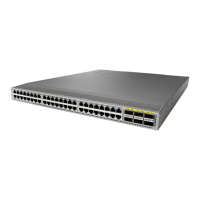
